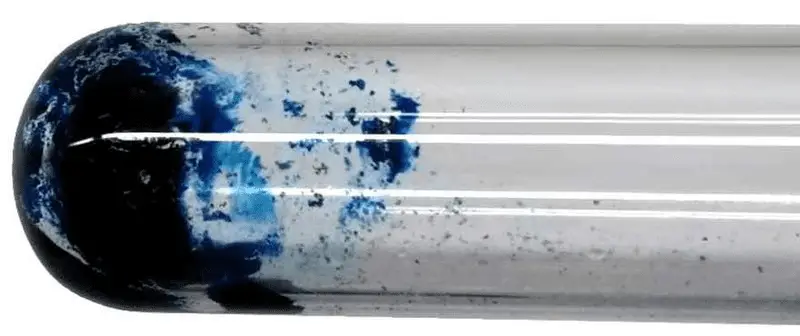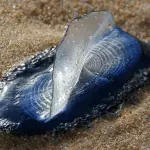It is common knowledge that Penicillin was accidentally discovered during a pursuit to find a drug to fight the influenza virus. Researches to develop weapons too had resulted in the discovery of many useful things.
Accidental Discovery of the Color
A German alchemist Johann Dippel has been trying to create gold for some years. Although he didn’t make gold, his experiments stumbled upon a blue object called Prussian Blue. Modern medicine uses it in the treatment of metal poisoning caused by certain elements.
Among blue objects, Prussian blue merits very special mention due to the splendor and regalia it creates in our minds. The color is so majestic that Vincent van Gogh once said,
“One should not work Prussian blue into one’s drawing of a face- for then it ceases to be flesh and becomes wood.”
When Prussian Blue Got Rejected
It was the color of the Prussian army from the eighteenth century till World War I. The uniforms were replaced with a grayish variety. The reasons were many:
i. To introduce the same color as German army uniforms.
ii. Prussian blue was easy to spot from fighter planes.
iii. To cut down the costs of uniforms.
iv. The color of the uniforms of soldiers of France, an enemy nation was blue.
Another comic instance of a blue object like Prussian blue getting rejected was by Crayola, the manufacturer of crayon pencils. They changed the name of their product from Prussian blue to midnight blue. The reason was that in 1958 there was no nation by the name Prussia.
Prussian Blue in Nature
Blue objects are very common in nature. Prussian blue has a different story to tell. Stones and plants contain this color. But the extraction methods are way too costly for commercial uses. The natural extract known as ultramarine was a favorite of artists. It was sold by the drops. Before Johann Dippel stumbled upon the color, another German chemist Heinrich Diesbach created Prussian blue by mixing a variant of cyanide, a commonly available red dye, and iron sulfate. Synthetic colors were not used till then and the discovery became an instant sensation.
Use of the Color on Battlefields
1. Used as invisible ink.
2. Treatment for radiation.
3. To dye uniforms of soldiers.
Famous People Who Fancied Prussian Blue
Many historical figures had a leaning towards blue objects. But a few were drawn to Prussian blue. Many great artists were fascinated by it.
· The French impressionist painter Paul Cézanne was obsessed with the color that he dyed his mustache with it.
· William Wordsworth’s fascination with the color was a known fact during his lifetime. Baudelaire and E E Cummings mentioned it in many of their works.
· John Ruskin’s love for Prussian blue was such that most of his portraits show him wearing dresses in Prussian blue color.
Japanese Blue Revolution
The nineteenth-century saw a boost in the export of the synthetic color to Japan. The color was a sensation in imperial Japan due to many reasons.
i. The color was very vivid and Japanese tastes got oriented towards it.
ii. Its tonal range had a ‘dream-come-true’ effect on traditional artists.
iii. The foreign touch of the new blue object became news in a very short time.
The common blue color used by Japanese artists was indigo extracted from seaweeds. It used to fade over time to a beige or tan. Prussian blue was lasting and more vivid. A fantastic example is the use of different hues of Prussian blue by Katushika Hokusai. His famous work titled Thirty Six Views of Mount Fuji painted in the year 1830 had many art lovers awed. Another painting called “The Great Wave off Kanagawa,” is another masterpiece.
Mauritius Two-Penny Stamp
In 1993 a post office stamps cover of Mauritius titled, ‘The Greatest Item in All Philately’ was auctioned in Zurich, Switzerland for $4 million. The auction also had the distinction of bringing in the highest ever price for a philatelic item.
Another one of the most valued and rarest of the rarest postal stamps also belongs to Mauritius. It is known in philatelic circles as ”The Mauritius Two-Penny Stamp.” The ink used to print the stamp was Prussian blue.
Prussian Blue in Medicine
World Health Organization (WHO) has listed the blue object Prussian blue as an essential medicine. A pill containing it has uses in treating radioactive poisoning caused by cesium or thallium.
A condition that occurs due to the breakdown of red blood cells is known as G6PDD or Glucose-6-phosphate dehydrogenase deficiency. A urine test is needed to diagnose the disease. The test is done using Prussian blue.
The chemical name of Prussian blue extract is potassium ferric hexacyanoferrate.
How Prussian Blue Fights Radioactive Poisoning
Prussian blue has a deteriorating effect on certain radioactive materials.
1. Treating thallium with Prussian blue reduces the half-life of thallium from eight days to three days.
2. The half-life of cesium is 110 days. Prussian blue reduces it to thirty days.
In the Human Body
Patients suffering from thallium or cesium radioactive poisoning are ingested with Prussian blue. It insulates the intestines and prevents the toxins from being absorbed into the body. The body rejects them through bowel movements.
Are There Any Side Effects to Prussian Blue
Intake of the pill can cause constipation, bloating, or an upset stomach. They are treated with usual simple medicines. It is not uncommon for the color of the feces to turn blue.
Who Discovered Synthetic Prussian Blue?
The most popular claims are from Germany. The argument is still raging without any credible outcome. Popular names to whom the discovery is attributed are the following German scientists:
i. Johann Dippel.
ii. Heinrich Diesbach.
iii. Max Perls.
The debate is still on and has not yet reached a logical conclusion.
Facts to Remember
1. Prussian blue extracts should not be taken in place of the pill. The treatment should be done under medical supervision.
2. The chemical name is C18Fe7N18.
3. The blue object is also known as Parisian blue and Berlin blue.



